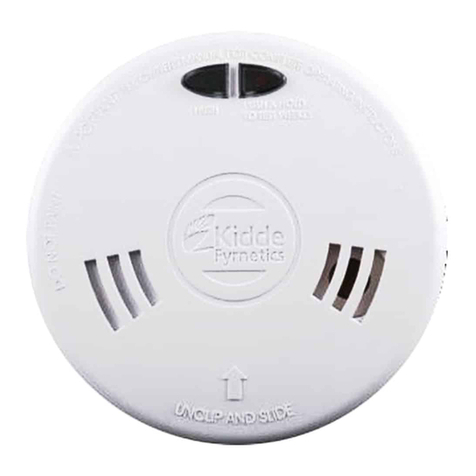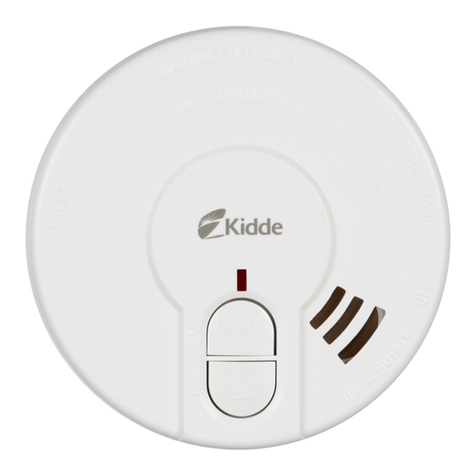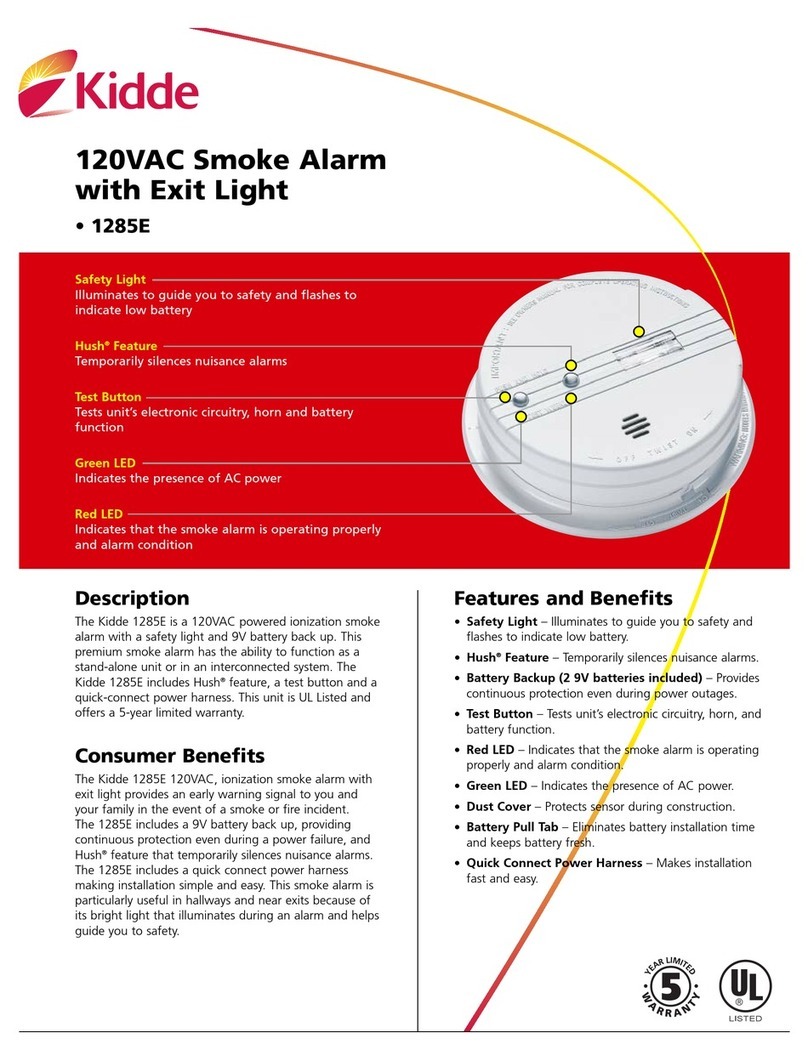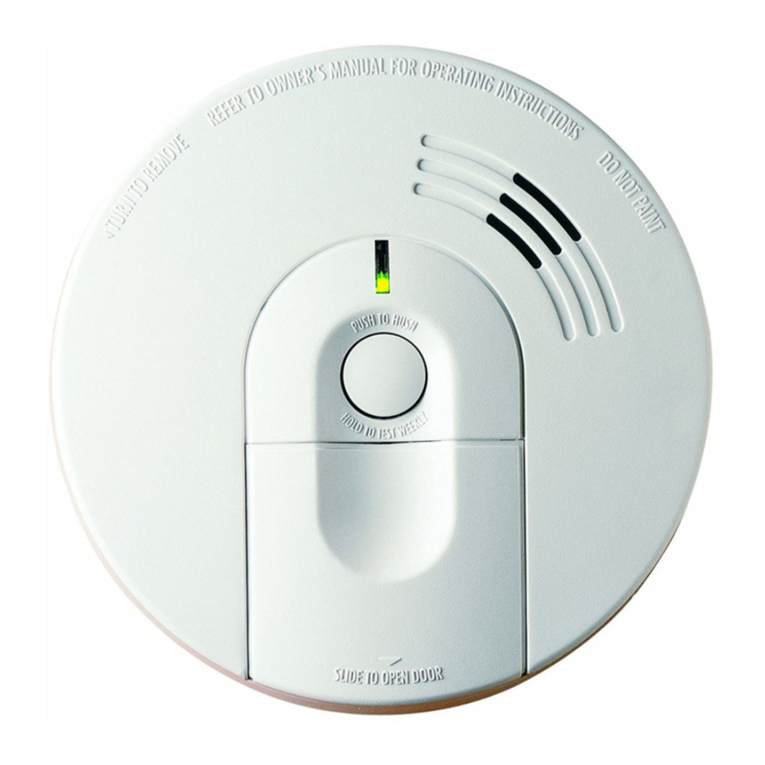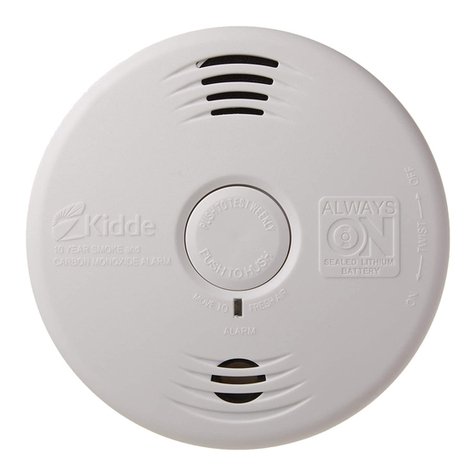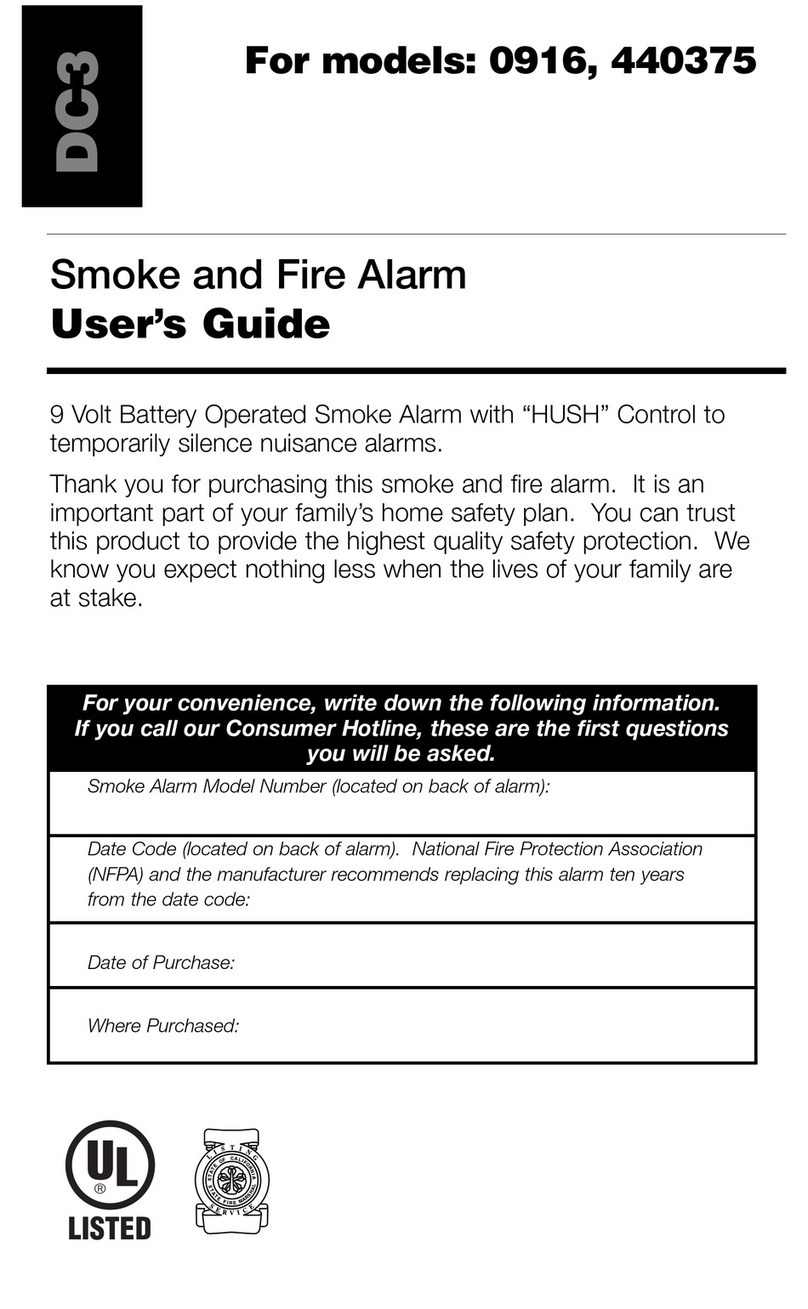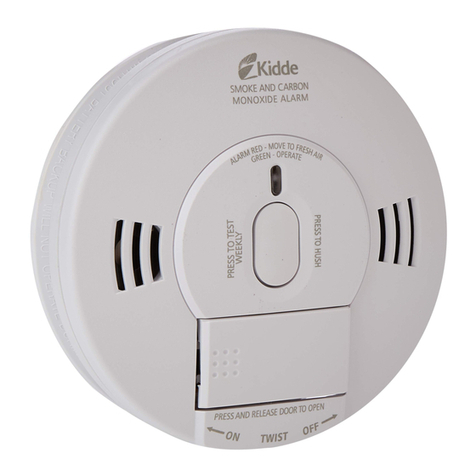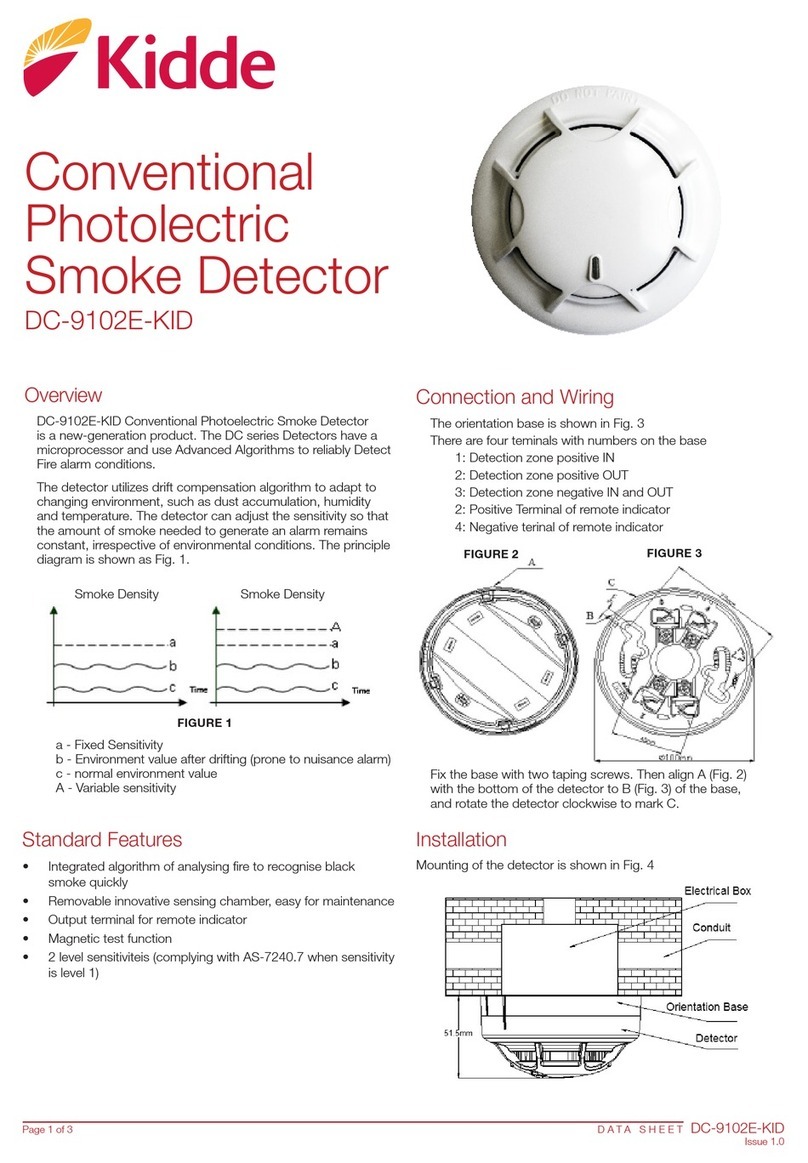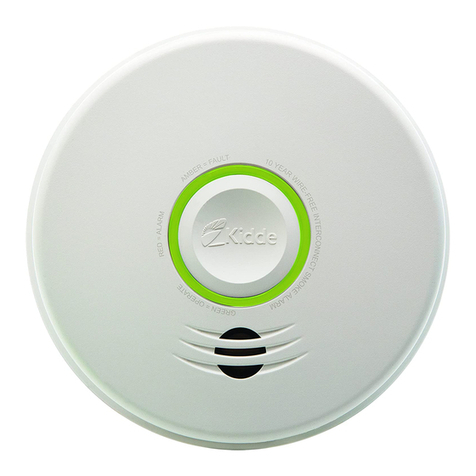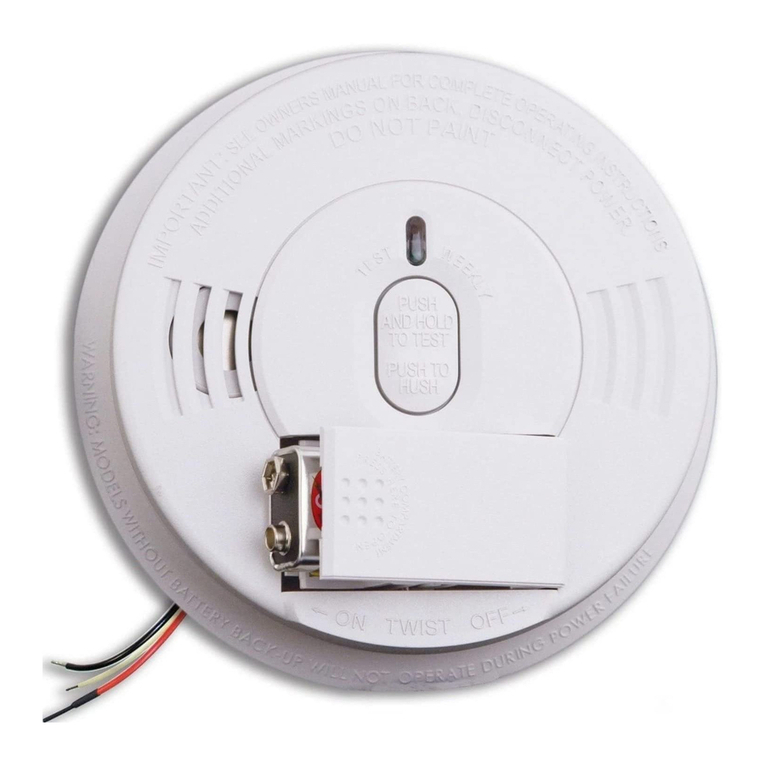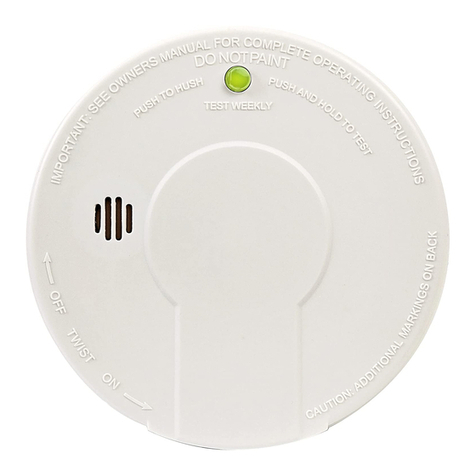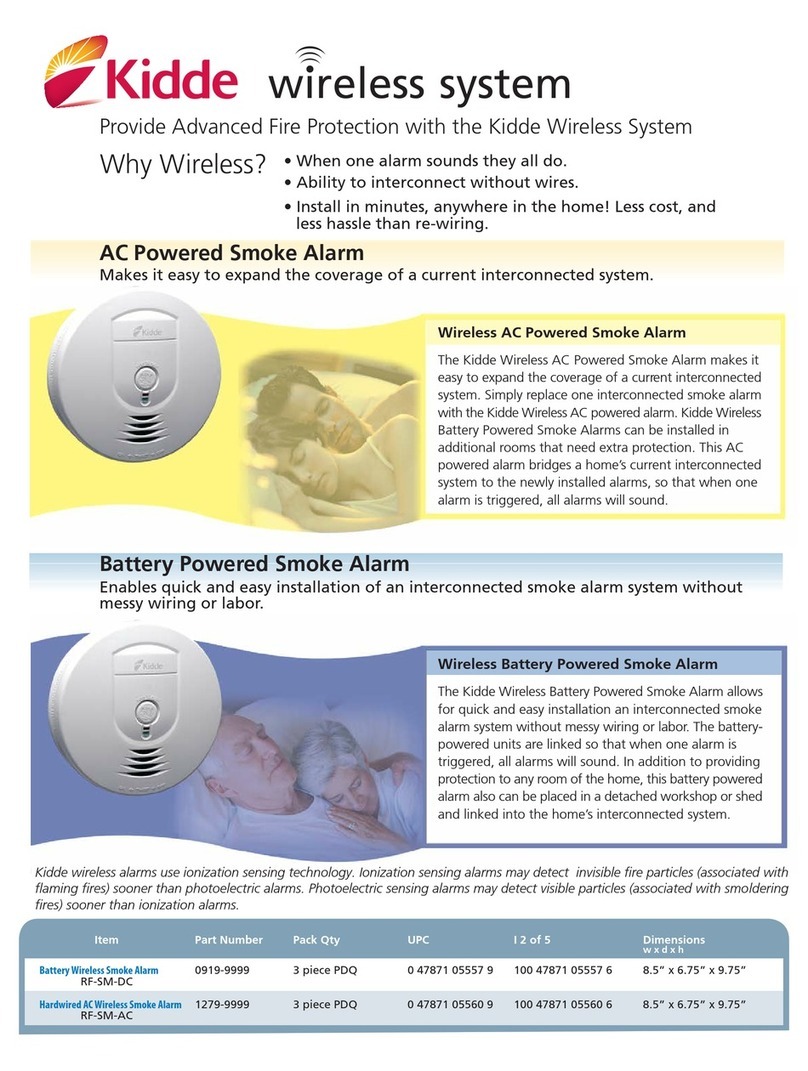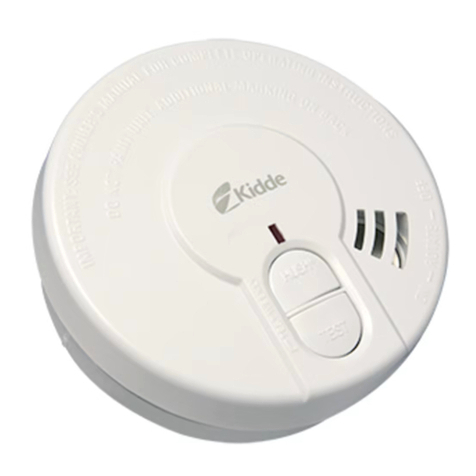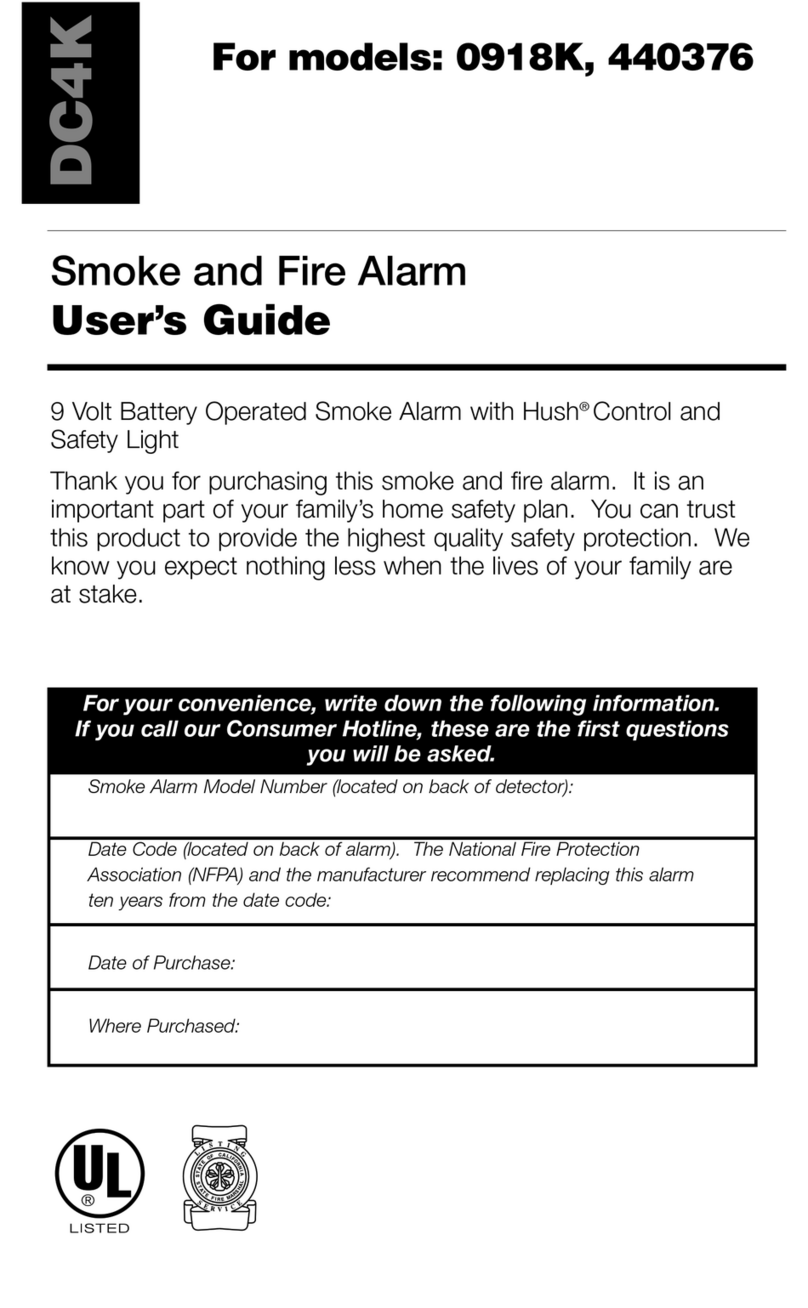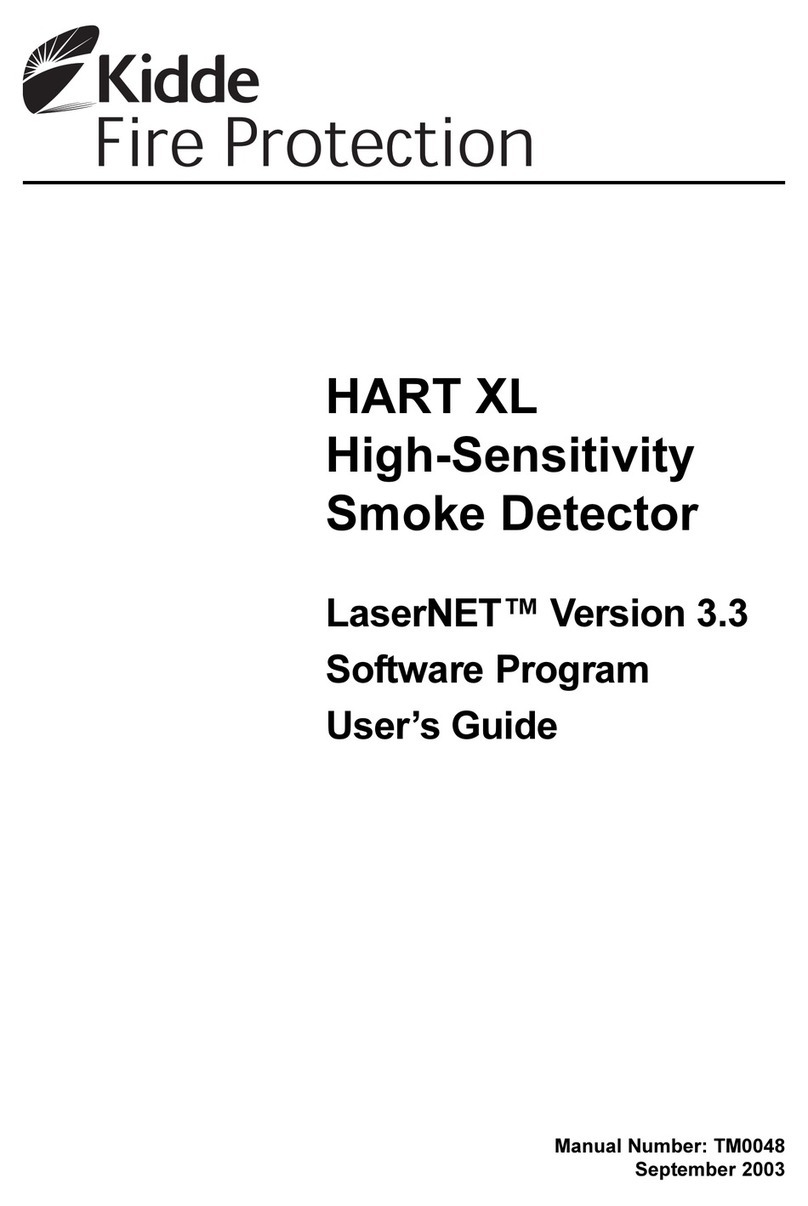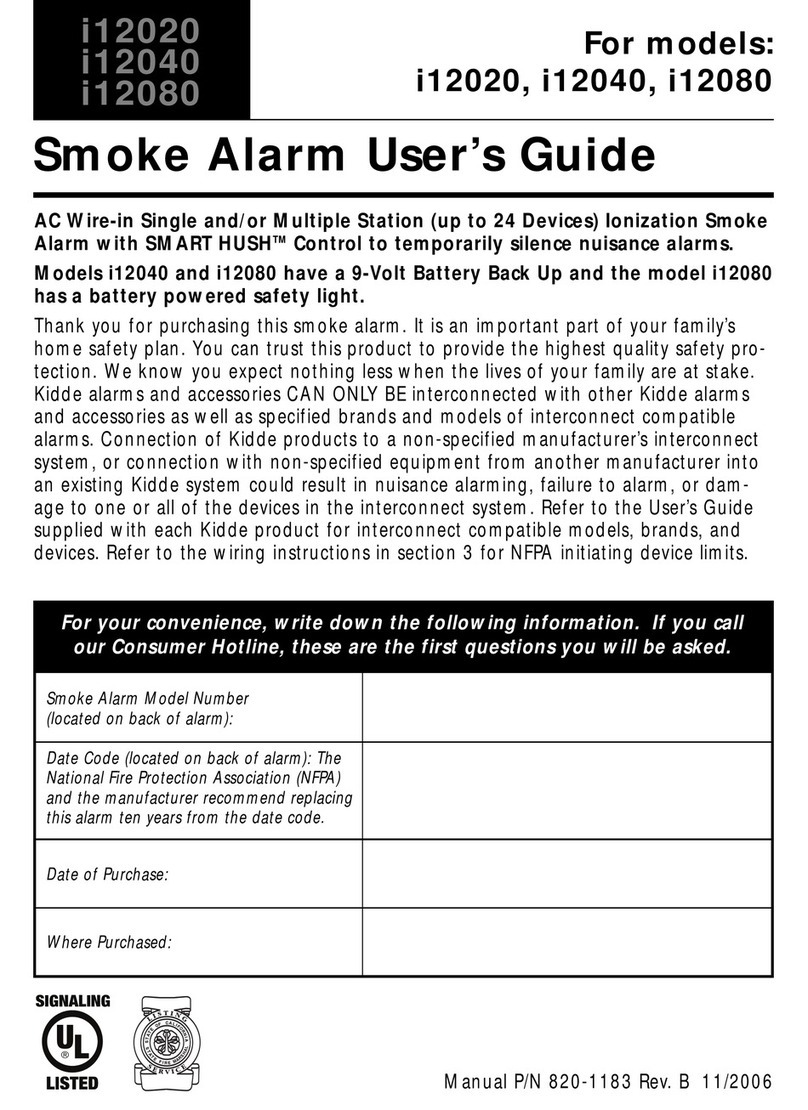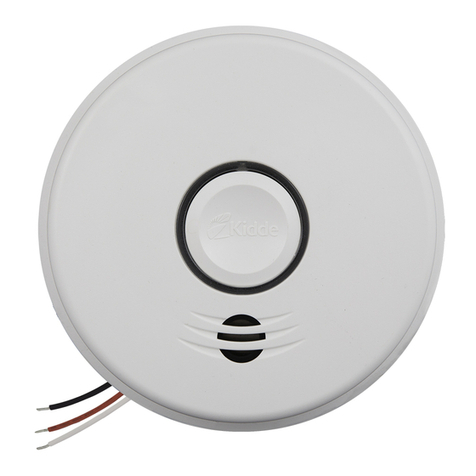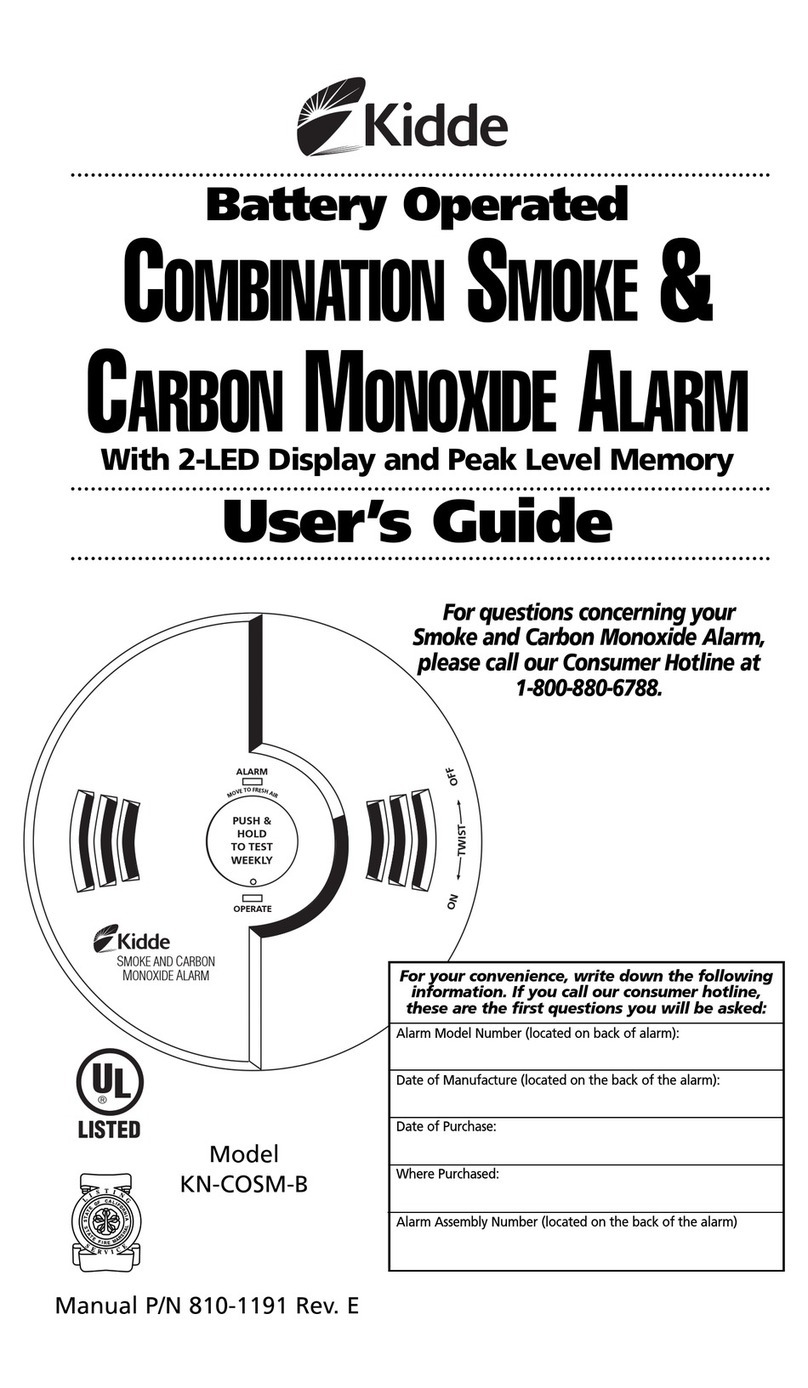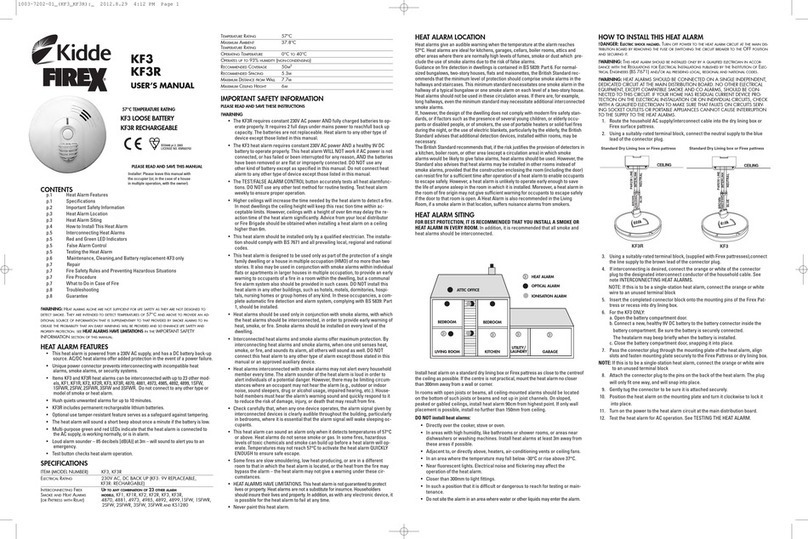
NOTE: DENSE SMOKE WILL OVERRIDE THE HUSH CONTROL
FEATURE AND SOUND A CONTINUOUS ALARM.
CAUTION: BEFORE USING THE ALARM HUSH FEATURE, IDEN-
TIFY THE SOURCE OF THE SMOKE AND BE CERTAIN A SAFE
CONDITION EXISTS.
LED INDICATOR: This smoke alarm is equipped with a red LED indi-
cator. The red LED is located under the test button and has several
modes of operation.
Standby Condition: The red LED will flash every 30-40
seconds to indicate that the smoke
alarm is operating properly.
Alarm Condition: When the alarm senses products of
combustion and goes into alarm, the
red LED will flash rapidly (once every
two seconds). The rapid flashing LED
and temporal alarm will continue until
the air is cleared.
Hush Condition: The red LED will flash every 2 seconds as
long as the alarm is in Hush mode.
Low Battery Condition: The red LED flash will be accompanied
by an audible chirp. Replace the battery
when this condition occurs.
SMOKE SENSING CHAMBER OPERATION: This alarm will “chirp” if
any of the components in the smoke sensing chamber fail. This
chirp will occur between the flashes of the red LED indicator light.
(If the chirp occurs at the same time as the red LED flash, see sec-
tion 6 for low battery information).
TESTING: Test by pushing the test button on the cover and hold it
down for a minimum of 5 seconds. This will sound the alarm if the
electronic circuitry and horn and battery are working. If no alarm
sounds, the unit has defective batteries or other failure. DO NOT
use an open flame to test your alarm, you could damage the
alarm or ignite combustible materials and start a structure fire.
Alarm Memory: This smoke alarm is equipped with an alarm
memory feature which produces a rapid
chirping sound when the test button is pushed.
This sound indicates that the alarm has been
activated since it was last tested. Releasing the
test button clears the memory. If the alarm
memory sound is heard, release the test button
